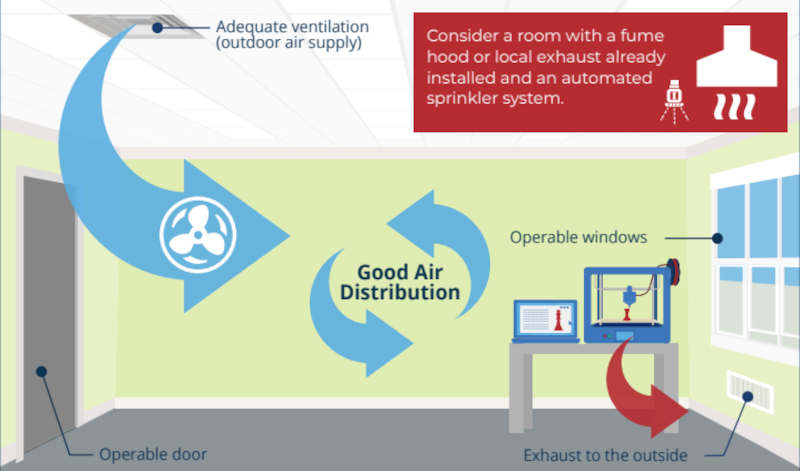
CIRI study finds fumes from common 3D printers are toxic
By DE Staff
Additive Manufacturing MedicalParticulates from FFF printers using ABS, PLA filaments are damaging to human airways, DNA, even at low levels, report finds.

(Image credit: Chemical Insights Research Institute)
According to a report by Georgia State University’s School of Public Health and the Chemical Insights Research Institute (CIRI), a non-profit organization that serves as an institute of Underwriters Laboratories, particle emissions from 3D printing can negatively impact health.
Specifically the report (Dosimetric and Toxicological Analysis of 3D Printer Emitted Particles) details the potential impact of the fused filament fabrication (FFF) process when using ABS and PLA filaments. Since FFF involves the heating, cooling and manipulating of these thermoplastics, the process creates airborne emissions of harmful chemicals and particulate matter.
The CIRI study found that exposure to those emissions, even at low levels, was “associated with a decline in airway cell viability, oxidative stress, an increase in DNA damage and high levels of metabolites that are associated with cellular injury and inflammation.”
While ABS was found to be the more damaging, CIRI recommends that operators maintain a safe distance from FFF 3D printers using either build material, while also implementing ventilation and filtration methods, especially since these systems are common in high schools and universities.
In addition to the full text of the detailed report, the organization also offers guides on how to improve indoor air quality around 3D printers.
https://chemicalinsights.org
